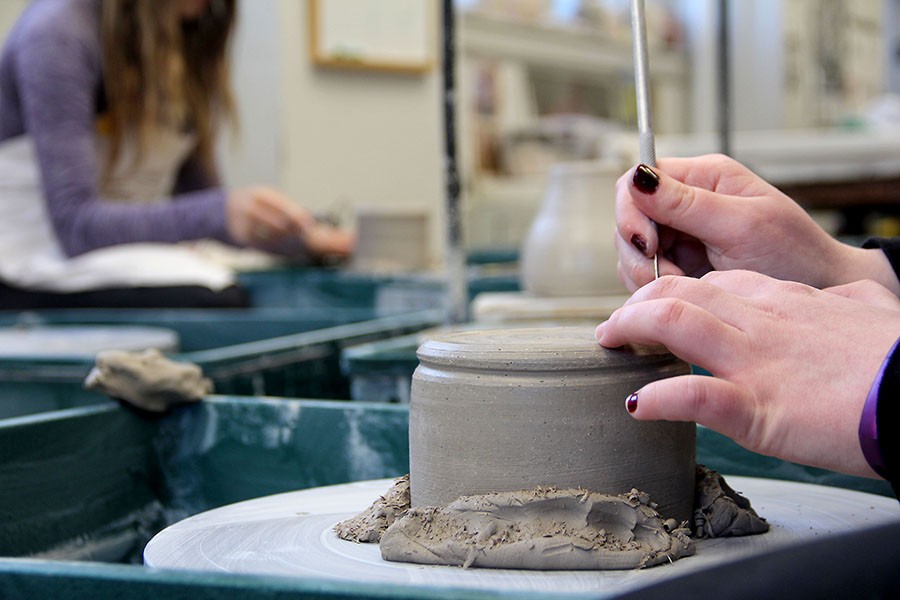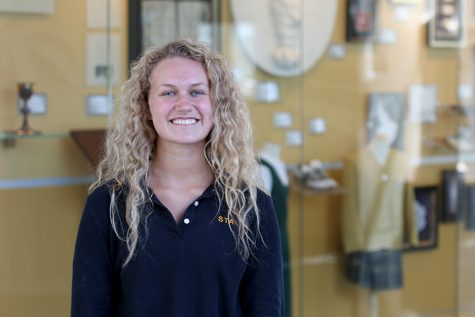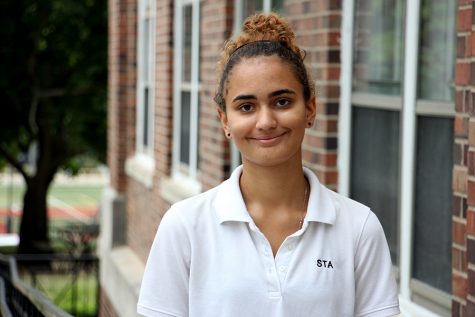Quarter long fine arts classes starting next year
STA is offering quarter long fine arts classes for the first time next year, which will have a more focused agenda. The Painting & Felting, Wheel Throwing and Raku Firing classes will all be taught by art teacher Lisa Dibble.
Senior Jaclyn Blanck puts some finishing touches on her ceramics pot during her Ceramics 1 class period Feb. 19. photo by Alex Davis
March 21, 2016
story by Zoe Butler
Beginning next year, three classes taught by art teacher Lisa Dibble will be eight weeks long or a quarter of the school year. These classes include Silk Painting & Felting, Wheel Throwing and Raku Firing.
Principal of academic affairs, Barbara McCormick, first introduced the idea about a year ago when she saw it done at one of STA’s sister school. McCormick then introduced the idea to Dibble where it began to evolve.
“I thought maybe that’s a way to provide students with various opportunities that would take advantage of something that’s not a full semester, but would give them a taste or flavor of the course,” McCormick said.
According to McCormick, Dibble went a step further and started to rewrite some of the current course titles and descriptors so the titles of the courses aren’t so broad that people ignore them. Instead, she addressed her audience more directly with clearer terms for the classes.
photos by Alex Davis
[nggallery id= 1201]
McCormick says that although this will mainly be beneficial, there will be some drawbacks as far as scheduling goes. However, these can hopefully be worked out within the first semester or year of this new system.
“If you take it as your seventh or sixth course, then you have to choose [one of the] two other quarter courses, so that you have seven or six going all semester,” McCormick said. “So there’s some creative balancing and weighing on how that’s going to fit together.”
However, both Dibble and McCormick agree that the benefits far outweigh the scheduling challenge.
“One of the greatest benefits is providing students the opportunity to try something, explore something and still take a rigorous schedule or a full course load, but pop this into their schedule for a short period of time and back out,” McCormick said. “That’s kind of what we’re looking for, or a student who just wants to try a few different things, and doesn’t want to be locked in for a whole semester in a certain topic.”
Dibble agrees with this when she describes the courses as “instant gratification classes” that a student could take to get that immediate feeling of success.
Since next year is the first year that this will be done there may be some kinks at the beginning, but according to academic scheduler Kathy Walters, the administration hopes this will only be the beginning.
“We are trying out just three courses this year, but in the future we could be offering more quarter courses,” Walters said.





